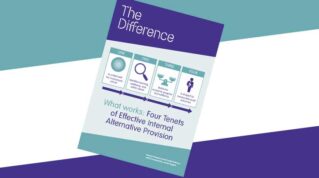The government is seeking to “improve” the way schools report on pupil premium spending, as an influential committee demanded officials follow up with settings that fail to do so.
Sir Geoffrey Clifton-Brown, chair of the public accounts committee, warned today that “for too many schools, the government is not sighted on how money that ought to be spent on helping disadvantaged children overcome their circumstances is actually being used”.
It comes after a National Audit Office report last year found the Department for Education “cannot demonstrate it is achieving value for money” in the way it uses £9.2 billion a year to narrow the disadvantage gap.
It warned the DfE had “limited evidence” on how well almost half of its disadvantage funding is spent.

It also found that one in five schools had failed to meet their duty to report how they spend the pupil premium – which makes up £2.9 billion of disadvantage funding – in 2023.
The committee has now recommended the DfE introduces “stronger and clearer” mechanisms to understand how schools spend funding, while allowing them to retain the principle of local decision-making.
It said the DfE should collect data on where schools use disadvantage-focused funding for interventions such as tutoring. The DfE should also stress the need for schools to publish pupil premium spending plans, and follow up with any schools that do not.
Clifton-Brown said it was important for schools to have autonomy when it comes to deciding how best to spend funding in a way that supports pupils.
“However, with autonomy must come accountability,” he said.
“In a constrained funding environment, it becomes all the more important that schools are supported to make the right choices.
“No-one should be satisfied until not one of the two million children without the same advantages as their peers risk being left behind.”
DfE looks to ‘improve’ reporting
A DfE survey issued earlier this week suggests government is keen to better its understanding of how pupil premium funding is being spent.
On Monday, the department invited schools leaders and parents to take part in research about “school accountability reform and performance”.
Part of this reform will focus on “improvements to how schools report on pupil premium spending”, said the DfE.
Details of the probe are not yet known. Those interested in taking part are invited to fill out a short form, and will be contacted by researchers if invited to participate.
Schools divert cash to plug deficits in ‘last resort’
The PAC’s inquiry heard evidence from existing research showing that pupil premium funding is increasingly being used for whole-school interventions or to budget plug deficits.
Over 90 per cent of disadvantage funding is not ringfenced, allowing leaders to spend it as they see fit given their local context.
But research by charity The Sutton Trust found 47 per cent of senior school leaders were using pupil premium to plug budget gaps last year. This was more than double the 23 per cent that were doing so in 2019.
School leaders’ union ASCL said schools would only use disadvantage funding for budget gaps as “a last resort” and that it is “symptomatic of the inadequacy of school funding overall”.
Disadvantage gap ‘not narrowing fast enough’
It comes as around two million children in England are lagging behind their peers academically, which is likely to affect their future life chances.
In 2022-23, a quarter of disadvantaged pupils achieved grade 5 or above in English and Maths GCSE, compared with just over half (52 per cent) of those not classed as disadvantaged.
The PAC welcomed what marks a “slight narrowing” in the attainment gap in the last two years, but warned “this progress is too slow”.
“The DfE acknowledged this as part of the inquiry, and has not set out the specific progress it wants to make on closing the gap and by when,” said the committee.
Among a string of recommendations made in its report, the PAC urged the DfE to set out targets for how it will narrow the disadvantage gap over the coming decade.
It also called on the government to take local areas, gender, and ethnicity, into account when working out the attainment gap index, rather than just looking at the national picture.

School leaders ‘doing all they can’
Julia Harnden, funding specialist at ASCL, said school leaders “are doing everything they can to support disadvantaged pupils in the most effective way possible”.
“They are also operating within very challenging financial circumstances. If the pupil premium is being used to plug budget gaps, it will be as a last resort and is symptomatic of the inadequacy of school funding overall.”

Paul Whiteman, general secretary at school leaders’ union NAHT, added that schools “do their level best” to help children from disadvantaged backgrounds “reach their potential”.
“But disadvantaged pupils disproportionately suffered from the pandemic and funding cuts over the last decade, not just to schools, but to wider services like social care, mental health, and support with special educational needs.”
He called for “sustained long-term investment”, and said this should be supported by the spring statement which is due to be delivered the chancellor later this month.
Responding to the PAC report, a DfE spokesperson said: “This report highlights the baked-in inequalities in our education system which we’re determined to tackle through our Plan for Change, breaking the unfair link between background and opportunity.
“Despite the fiscal black hole we inherited, we are wasting no time in taking action, increasing pupil premium as part of the wider increase in school funding to £63.9 billion next year, and delivering an unprecedented 45% increase in early years pupil premium.
“We are also delivering free breakfast clubs in every primary school, expanding our attendance mentors programme, and running our curriculum and assessment review that will tackle the obstacles that hold children back.”
















Your thoughts